You are using an out of date browser. It may not display this or other websites correctly.
You should upgrade or use an alternative browser.
You should upgrade or use an alternative browser.
Someone told me to buy these, now what?? Need help with lug connectors
- Thread starter Santa
- Start date
offgriddle
"FOREVER BEGINNING"
A dielectric is a non conductor of electricity which is not a good thing to use when you want to make a good electricial connection. Maybe look at switching to conductive grease which still guards against moisture and the corrosion caused by moisture, while not presenting a potential for impeding the flow of electricial current by getting in between conductors and contacts and acting as an insulator? https://www.mcmaster.com/conductive-greaseMy local Lowes stocks them in all large sizes in copper, cheap! I use them a lot when experimenting with different configurations. I usually use dielectric grease on the wire before installing. Sometimes I tin the ends of the wire first.
offgriddle
"FOREVER BEGINNING"
The connector is very commonly used for ground and neutral connections on electricial panels and such. Not sure how you would affix such a connector to SCC terminals.
SolarRat
Solar Addict
A dielectric is a non conductor of electricity which is not a good thing to use when you want to make a good electricial connection. Maybe look at switching to conductive grease which still guards against moisture and the corrosion caused by moisture, while not presenting a potential for impeding the flow of electricial current by getting in between conductors and contacts? https://www.mcmaster.com/conductive-grease
I'm not relying on the DE to make a good connection, that's mechanical pressure's job. You have to be careful using any type of conductive grease in the heat...it melts and runs places you may not want it.
SolarRat
Solar Addict
Thanks. As long as that starter battery is lead acid there's no problem. A lithium there would probably kill the alternator.
offgriddle
"FOREVER BEGINNING"
Correct, you are not relying on the DE to make a good connection because it's not a conductor at all, it is an insulator! It's all good, at least your keeping the corrosion down. Carry on.I'm not relying on the DE to make a good connection, that's mechanical pressure's job. You have to be careful using any type of conductive grease in the heat...it melts and runs places you may not want it.
SolarRat
Solar Addict
Correct, you are not relying on the DE to make a good connection because it's not a conductor at all, it is an insulator! It's all good, at least your keeping the corrosion down. Carry on.
You are correct, it should be used on the outside of the connection.
Santa
.
- Joined
- Nov 10, 2019
- Messages
- 612
I put the blueprint and the video of what i am installing AT MY ORIGINAL POST, only for now i only have (2) 100ah battleborns. I will connect it to my starting battery LATER and add another Battleborn later. I didn't know this question would turn into so much confusion about grease and no grease, etc...etc...the person who told me to buy the lugs just bought land and is there sleeping in his small vehicle about to start a homestead, i didn't want to bother him and use his bandwidth, but i think im going to have to.
offgriddle
"FOREVER BEGINNING"
I just watched Will's video of opening up a battleborn battery. Of course the quality of the individual cells are unknown due to lack of manufacturing identity and the BMS wasn't dissected and examined which means the consumer is going to have to trust that battleborn selected the highest quality components. But judging from the case construction and heavy wiring along with Will's positive interaction with a highly knowledgeable staff at battleborn, it's highly plausible that other quality components were also used.I put the blueprint and the video of what i am installing AT MY ORIGINAL POST, only for now i only have (2) 100ah battleborns. I will connect it to my starting battery LATER and add another Battleborn later
Santa
.
- Joined
- Nov 10, 2019
- Messages
- 612
WHAT?? That's not the video in my post...I just watched Will's video of opening up a battleborn battery. Of course the quality of the individual cells are unknown due to lack of manufacturing identity and the BMS wasn't dissected and examined which means the consumer is going to have to trust that battleborn selected the highest quality components. But judging from the case construction and heavy wiring along with Will's positive interaction with a highly knowledgeable staff at battleborn, it's highly plausible that other quality components were also used.
offgriddle
"FOREVER BEGINNING"
Oops sorry, I got mixed up I'm sure,but that one was a great video too!WHAT?? That's not the video in my post...
Santa
.
- Joined
- Nov 10, 2019
- Messages
- 612
I'll watch when I get a chance. But a LFP starting battery will kill your alternator, I guess that is what the Renogy is supposed to solve? I'll watch after dinner...
And I don't know what blueprint you are talking about. I thought this thread was about cable lugs?
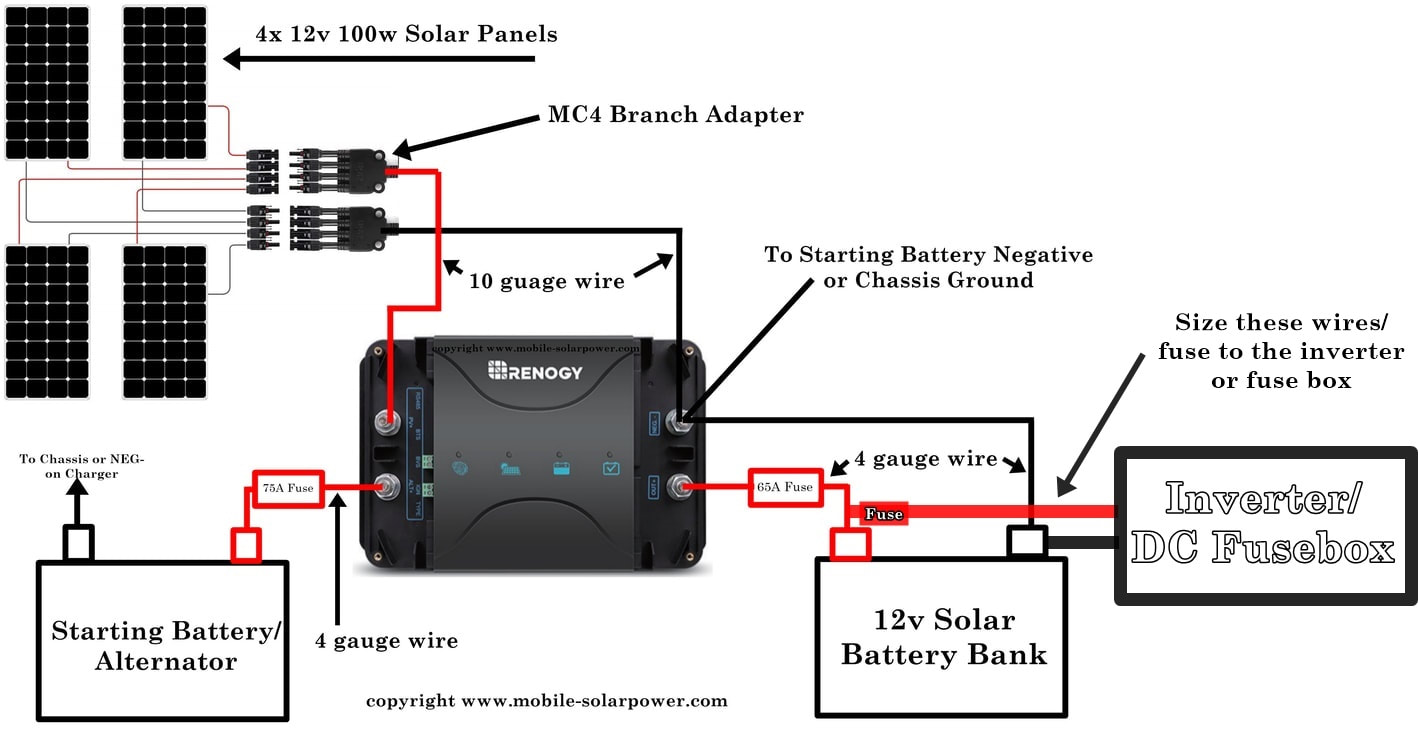
RV Solar Power Blue Prints
Building a vehicle mounted solar power system? Let me help.
www.mobile-solarpower.com
JeepHammer
Solar Wizard
- Joined
- Nov 15, 2019
- Messages
- 1,149
If I may lay out The Confusion,
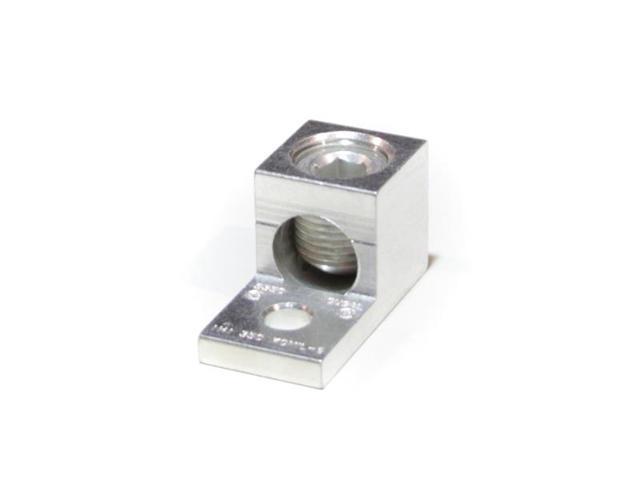
1. This lug is in question.
Apparently the inverter doesn't support 000 (3/0) Ga. or 0000 (4/0) Ga. cables and will need an oversize lug connected to the inverter terminal to accept a bare cable (no ring terminal that bolts directly on).
For cable ends I would have recommended something practical, like a plated, solid copper that would carry the current, but the Original Poster (OP) give details and we had to guess at application.

2. GREASE.
The lug above was still in dispute, could very well have been used in a wet/rain/corrosive environment, and it's common usage to use protective coatings on lugs/terminals/exposed conductors.
Oxidation/Corrosion control grease is conductive, you DO NOT use conductive grease where it can migrate (run) from one terminal to another. Period.
(See picture of stacked terminals on inverter & charge controller.
Non-conductive Dielectric grease or other non-conductive terminal protector when multiple terminals are in close proximity.
On copper wires you can 'Tin' the wire, or you can use a little dielectric grease.
As mentioned above, dielectric grease is very low viscosity and the mechanical force of the screw terminal will make a fine connection in spite of the grease.
For those that think dielectric grease will inhibit a connection, I would point out the best quality terminals that crush, mash and screw terminal types come Pre-Loaded with Dielectric grease...

1. This lug is in question.
Apparently the inverter doesn't support 000 (3/0) Ga. or 0000 (4/0) Ga. cables and will need an oversize lug connected to the inverter terminal to accept a bare cable (no ring terminal that bolts directly on).
For cable ends I would have recommended something practical, like a plated, solid copper that would carry the current, but the Original Poster (OP) give details and we had to guess at application.

2. GREASE.
The lug above was still in dispute, could very well have been used in a wet/rain/corrosive environment, and it's common usage to use protective coatings on lugs/terminals/exposed conductors.
Oxidation/Corrosion control grease is conductive, you DO NOT use conductive grease where it can migrate (run) from one terminal to another. Period.
(See picture of stacked terminals on inverter & charge controller.
Non-conductive Dielectric grease or other non-conductive terminal protector when multiple terminals are in close proximity.
On copper wires you can 'Tin' the wire, or you can use a little dielectric grease.
As mentioned above, dielectric grease is very low viscosity and the mechanical force of the screw terminal will make a fine connection in spite of the grease.
For those that think dielectric grease will inhibit a connection, I would point out the best quality terminals that crush, mash and screw terminal types come Pre-Loaded with Dielectric grease...
JeepHammer
Solar Wizard
- Joined
- Nov 15, 2019
- Messages
- 1,149
3. The OP insisted repeatedly that they were going to use the diagram given without exception.
Notice the "Size These Wires/Breaker To Inverter Size"?
This is what I was attempting to do with the OP when the posts started up...
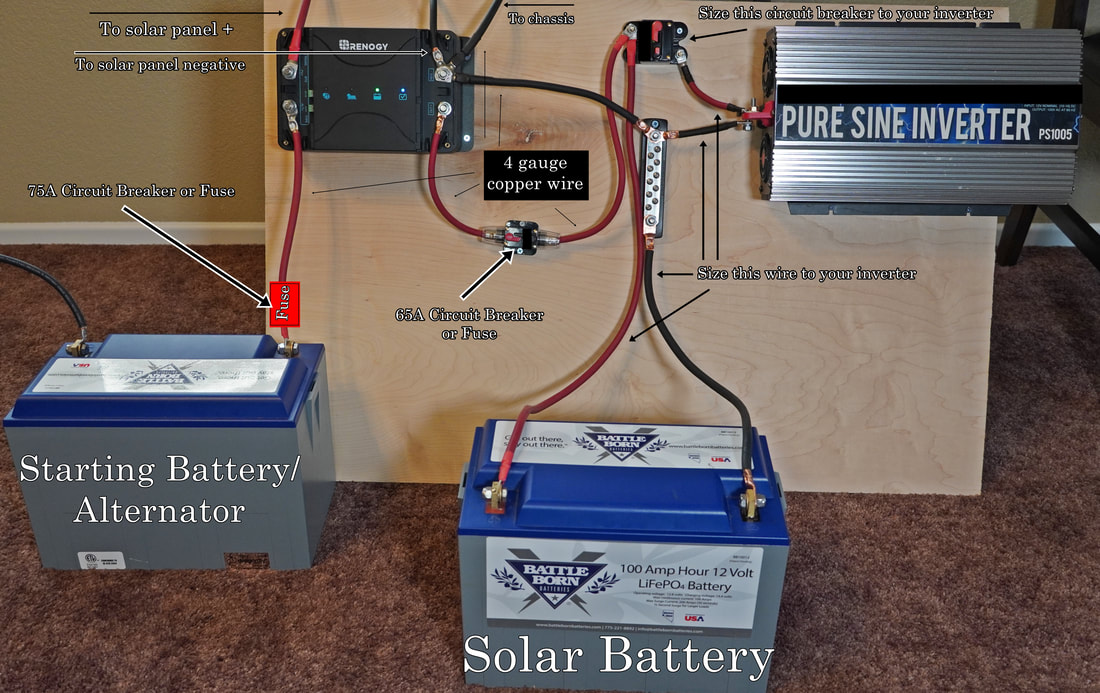
After some clarification,
This is a 2,000 Watt nominal (4,000 Surge) inverter.
4,000 watt output in surge is a 333.33 Amp load draw, discounting line resistance & inverter losses.
(4,000 Watts ÷ 12 VDC = 333.333 Amps)
0000 (4/0) AWG cable will only handle 312 Amps @ 100% Duty Cycle.
At nominal operation maximum of 2,000 Watts,
(2,000 Watts ÷ 12 VDC = 166.666 Amps)
0 (1/0) AWG will easily handle 167 Amps, 100% duty cycle of 0 (1/0) AWG is 185 Amps.
An intermediate cable size for about 3,000 Watts (between 2,000 nominal & 4,000 extreme upper limit),
(3,000 Watts ÷ 12 VDC = 250 Amps, will NOT be continuous)
000 (3/0) AWG will support 262 Amps on 100% Duty Cycle,and should support higher draw on a very short basis.
4. From the image above you will notice the inverter circuit breaker is well away from the battery (power source) and leave unprotected high amperage cable.
Since this will wind up in an RV/Camper I was *Trying* to get the OP to armor the unprotected cable with conduit,
OR,
Put the breaker at the battery for safety.
Again, this is personal experience, as much of energized wiring as is humanly possible SHOULD be protected because life (shit) does happen.
From sharp edge rub through, to rodents, to vehicle accidents, life happens... Fuses & Breakers are cheap!
Notice the "Size These Wires/Breaker To Inverter Size"?
This is what I was attempting to do with the OP when the posts started up...

After some clarification,
This is a 2,000 Watt nominal (4,000 Surge) inverter.
4,000 watt output in surge is a 333.33 Amp load draw, discounting line resistance & inverter losses.
(4,000 Watts ÷ 12 VDC = 333.333 Amps)
0000 (4/0) AWG cable will only handle 312 Amps @ 100% Duty Cycle.
At nominal operation maximum of 2,000 Watts,
(2,000 Watts ÷ 12 VDC = 166.666 Amps)
0 (1/0) AWG will easily handle 167 Amps, 100% duty cycle of 0 (1/0) AWG is 185 Amps.
An intermediate cable size for about 3,000 Watts (between 2,000 nominal & 4,000 extreme upper limit),
(3,000 Watts ÷ 12 VDC = 250 Amps, will NOT be continuous)
000 (3/0) AWG will support 262 Amps on 100% Duty Cycle,and should support higher draw on a very short basis.
4. From the image above you will notice the inverter circuit breaker is well away from the battery (power source) and leave unprotected high amperage cable.
Since this will wind up in an RV/Camper I was *Trying* to get the OP to armor the unprotected cable with conduit,
OR,
Put the breaker at the battery for safety.
Again, this is personal experience, as much of energized wiring as is humanly possible SHOULD be protected because life (shit) does happen.
From sharp edge rub through, to rodents, to vehicle accidents, life happens... Fuses & Breakers are cheap!
Last edited:
offgriddle
"FOREVER BEGINNING"
Dielectric grease is non conductive and if used properly and in the appropriate circumstances okay as long as it does not form an insulating layer between & amongst the conductors and the connection. ~ When a manufacturer provides a wire terminal connection on a device it is unwise to take it upon ourselves to modify and exceed the gauge, therefore, potential amperage of the connector as built.If I may lay out The Confusion,

1. This lug is in question.
Apparently the inverter doesn't support 000 (3/0) Ga. or 0000 (4/0) Ga. cables and will need an oversize lug connected to the inverter terminal to accept a bare cable (no ring terminal that bolts directly on).
For cable ends I would have recommended something practical, like a plated, solid copper that would carry the current, but the Original Poster (OP) give details and we had to guess at application.
View attachment 2158
2. GREASE.
The lug above was still in dispute, could very well have been used in a wet/rain/corrosive environment, and it's common usage to use protective coatings on lugs/terminals/exposed conductors.
Oxidation/Corrosion control grease is conductive, you DO NOT use conductive grease where it can migrate (run) from one terminal to another. Period.
(See picture of stacked terminals on inverter & charge controller.
Non-conductive Dielectric grease or other non-conductive terminal protector when multiple terminals are in close proximity.
On copper wires you can 'Tin' the wire, or you can use a little dielectric grease.
As mentioned above, dielectric grease is very low viscosity and the mechanical force of the screw terminal will make a fine connection in spite of the grease.
For those that think dielectric grease will inhibit a connection, I would point out the best quality terminals that crush, mash and screw terminal types come Pre-Loaded with Dielectric grease...
JeepHammer
Solar Wizard
- Joined
- Nov 15, 2019
- Messages
- 1,149
Dielectric grease is non conductive and if used properly and in the appropriate circumstances okay as long as it does not form an insulating layer between & amongst the conductors and the connection. ~ When a manufacturer provides a wire terminal connection on a device it is unwise to take it upon ourselves to modify and exceed the gauge, therefore, potential amperage of the connector as built.
You are certainly free to do what you think is right.
There are places I won't use grease, it's simply not needed,
Other places it not appropriate.
Consumer 'Battery Cable' is thicker stands (opposed to something like welding cable) and I find the strands mash the grease out at contact points, but stays between strands where moisture can enter/corrode.
In most cases,
Manufacturers don't apply things like Never-Seize, Thread Locker, Oxidation Guard, Dielectric Grease simply because it costs time & money.
Anyone that's ever had to work on an old vehicle or equipment is most certainly aware of rusted/corroded in bolts, corroded out electrical connectors, twisted off fasteners, etc...
For instance, I won't put a steel bolt in aluminum without either thread locker (seals out moisture as well as keeping the bolt in) or Never-Seize to keep that bolt from galvanic corrosion lock into the aluminum.
I've got 3 aluminum engine timing covers with water pump bolts twisted off in them right now in the shop, the flowing coolant increases the galvanic issues and bolts ALWAYS corrode solidly into these timing/pump covers.
While it's a steady income stream for me, it takes very particular tools to repair those covers, which are for 'Vintage' engines not made since 1990.
Any & every outdoor electrical connection I do gets protected.
Aluminum cables get Oxi-Guard when they clamp in lugs,
Copper wires get tinned, Oxi-Guard, or Dielectric grease.
I learned this the hard way, since humidity, fog, rain gets everywhere no matter what, and DC electrical connections don't handle it well, much worse than AC wiring.
It's like the guff I take about lead/acid battery connections, solid, plated connector, heavy crimp (mechanical connection), silver bearing electrical solder, then glue filled heat shrink tubing...
Then seal up between battery post & case with the spray on goop, make connection, and spray everything to seal it up.
While other people schedule regular replacement ends, I clean mine every year or two, seal them back up and some have been around for 15 years (or more).
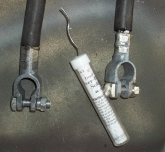
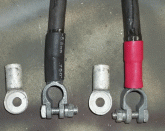
THIS is what happens when just moisture/water gets into a terminal/cable bundle...
And this should explain WHY I learned to seal everything up against DC & moisture.
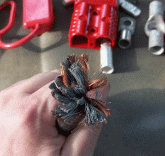
Armoring is using metal conduit, usually flexible to route the wire protected.I added the specs at my original post: 2 Battle born 100 Ah, 400 watts solar, 2000/4000PEAK pure sine wave inverter, Renogy DC-DC alternator MPPT Controller (there are 2 fuses and a circuit breaker in Wills blueprint and I'm adding a fusebox too.) May I ask if you looked at the blueprint? What is armoring? Sorry about the rats.
JeepHammer
Solar Wizard
- Joined
- Nov 15, 2019
- Messages
- 1,149
Armoring is using metal conduit, usually flexible to route the wire protected.
Actually 'Armor' is a generic term for extra protection other than electrical insulation.
Rigid or flexible (metal or plastic) conduit,
In race cars, we use layered laminated liquid pressure hose (steel braid/Teflon lined) to prevent the battery cables rear to front from being cut into in a crash.
Last edited by a moderator:
Yeah, but to keep critters out, like was posted... steel, or aluminum would be my choice!Actually 'Armor' is a generic term for extra protection other than electrical insulation.
Rigid or flexible (metal or plastic) conduit,
In race cars, we use layered laminated liquid pressure hose (steel braid/Teflon lined) to prevent the battery cables rear to front from being cut into in a crash.
JeepHammer
Solar Wizard
- Joined
- Nov 15, 2019
- Messages
- 1,149
Yeah, but to keep critters out, like was posted... steel, or aluminum would be my choice!
I will go with that!
Stainless Steel braided line will stop rodents also, wears their teeth out.
Ask me how I know that...
For whatever reason, rodents won't chew silicone vehicle heater hose available at about any any parts store.
Don't ask me why, but I've had two vehicles nearly completely stripped of insulation and hose, but they wouldn't touch the silicone heater hoses, gnawed on the steel braid but didn't get through it.
So much for storing project cars in a pole barn...
You ought to see my vette!I will go with that!
Stainless Steel braided line will stop rodents also, wears their teeth out.
Ask me how I know that...
For whatever reason, rodents won't chew silicone vehicle heater hose available at about any any parts store.
Don't ask me why, but I've had two vehicles nearly completely stripped of insulation and hose, but they wouldn't touch the silicone heater hoses, gnawed on the steel braid but didn't get through it.
So much for storing project cars in a pole barn...
Santa
.
- Joined
- Nov 10, 2019
- Messages
- 612
Please let me see if I follow you: Actually, yes these lugs I bought support 4/0, 3/0, 2/0, and 1/0- Are you meaning the inverter won't accept a 3/0 or 4/0 terminal? Here is exactly the lug I bought from EBAY: https://www.ebay.com/itm/231932273027 I am a bit confused, but learning and absorbing like a sponge. I appreciate your patience and information. (everyone else trying to help too!) I will get whatever is the best thing to buy. I am understanding that you think I should either bring the circuit breaker closer to the battery, but how close?, but then the blueprint will be completely different. (I would need a visual to see how to change it. If I am understanding you, you think the positive wire from the battery to the breaker is dangerous being left uncovered. You think I should cover the positive battery wire with something as an option. Am I right?If I may lay out The Confusion,

1. This lug is in question.
Apparently the inverter doesn't support 000 (3/0) Ga. or 0000 (4/0) Ga. cables and will need an oversize lug connected to the inverter terminal to accept a bare cable (no ring terminal that bolts directly on).
For cable ends I would have recommended something practical, like a plated, solid copper that would carry the current, but the Original Poster (OP) give details and we had to guess at application.
View attachment 2158
2. GREASE.
The lug above was still in dispute, could very well have been used in a wet/rain/corrosive environment, and it's common usage to use protective coatings on lugs/terminals/exposed conductors.
Oxidation/Corrosion control grease is conductive, you DO NOT use conductive grease where it can migrate (run) from one terminal to another. Period.
(See picture of stacked terminals on inverter & charge controller.
Non-conductive Dielectric grease or other non-conductive terminal protector when multiple terminals are in close proximity.
On copper wires you can 'Tin' the wire, or you can use a little dielectric grease.
As mentioned above, dielectric grease is very low viscosity and the mechanical force of the screw terminal will make a fine connection in spite of the grease.
For those that think dielectric grease will inhibit a connection, I would point out the best quality terminals that crush, mash and screw terminal types come Pre-Loaded with Dielectric grease...
Last edited:
Santa
.
- Joined
- Nov 10, 2019
- Messages
- 612
This is better...https://www.youtube.com/watch?v=3VtfqAym5sQDielectric grease is non conductive and if used properly and in the appropriate circumstances okay as long as it does not form an insulating layer between & amongst the conductors and the connection. ~ When a manufacturer provides a wire terminal connection on a device it is unwise to take it upon ourselves to modify and exceed the gauge, therefore, potential amperage of the connector as built.
JeepHammer
Solar Wizard
- Joined
- Nov 15, 2019
- Messages
- 1,149
Please let me see if I follow you: Actually, yes these lugs I bought support 4/0, 3/0, 2/0, and 1/0- Are you meaning the inverter won't accept a 3/0 or 4/0 terminal? Here is exactly the lug I bought from EBAY: https://www.ebay.com/itm/231932273027 I am a bit confused, but learning and absorbing like a sponge. I appreciate your patience and information. (everyone else trying to help too!) I will get whatever is the best thing to buy. I am understanding that you think I should either bring the circuit breaker closer to the battery, but how close?, but then the blueprint will be completely different. (I would need a visual to see how to change it. If I am understanding you, you think the positive wire from the battery to the breaker is dangerous being left uncovered. You think I should cover the positive battery wire with something as an option. Am I right?
What *I* (personally) would do is use a ring terminal on the cable and forget the lug.
This shows a round battery clamp on the cable, but I show a ring terminal that could be used for your application.
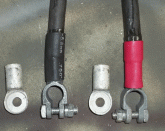
While I see are lot of people 'Up' on what's being made, and that's all good information.
It's the details on the small stuff that get overlooked,
People don't know about the alloy wire (not pure copper), the availability of terminals for applications, the difference between the 'Cheap'/'Common' terminals and the top shelf/top end stuff you have to hunt around a little for...
Like the conversation about terminal grease for instance...
Just some of the high amperage DC terminals I use, connectors, etc.
I learned to use them from heavy industrial applications, used there because of adverse conditions and heavy use (duty cycle).
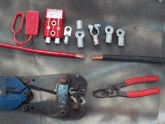
The (flattened tubing) terminal on left is most 'Common' but it has issues which I can explain in detail if interested.
The second left is a heavy copper, plated against corrosion, and it's used for series connections when full amperage load is needed.
This is what I use on parallel battery strings between terminals.
I also use these when battery strings connect to main lines to the inverter, with the large surface area and thickness of the single ring terminals this makes a 3 wire 'T' connection that will carry full amperage.
The mains run along in front of the battery strings, the strings bolt into the series terminals.
Stacking single terminals on posts creates electrical resistance and multiplies potential for corrosion creating even more electrical resistance.
Electrical resistance in a DC, solar powered circuit wastes you expensive and hard won current as heat and cripples the load carrying capacity of your expensive cables/terminals.
It's a case of "Buy Once, Cry Once" and not sitting in the dark while you try and track the failure (which I did a lot of when I started).
---------
The circuit breaker *Should* (ideally) be attached to the breaker so it protects the entire inverter cable.
In the real world (not ideal),
*I* (personally) armor what's not protected by the circuit breaker.
Someone can lay out a build but not anticipate what *Can* happen, rodents, car crashes, the insulation getting rubbed through, water leaks/condensation, all the things that happen in real life.
Last edited:
Similar threads
- Replies
- 21
- Views
- 697
- Replies
- 7
- Views
- 645
- Replies
- 76
- Views
- 2K
- Replies
- 13
- Views
- 726




